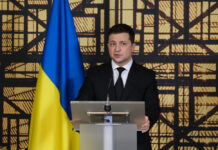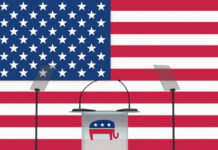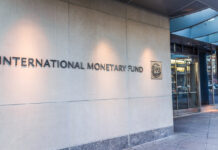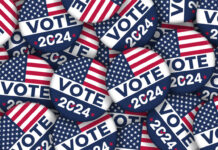By Glen Duerr
At odds with each other for half a century, American and Russian nationalist animosity thawed with the end of the Cold War. Oscillating between baited friendship and menacing animosity, successive US presidents have tried different tactics with President Putin. President Trump’s approach certainly differs from his predecessors – the key question is whether the nationalistic relationship with Russia will change in the long term?
For almost half a century between 1945 and 1990, the United States and the Soviet Union grappled for global supremacy. Years passed with fever pitched tensions between the superpowers threatening to bring the world into a third global conflagration in the 20th century, likely with the use of nuclear weapons. Then, with the fall of the Berlin Wall in November 1989 and the dissolution of the Soviet Union in December 1991, the Cold War thawed dramatically. In the aftermath, relations between the US and the reconstituted Russia became much friendlier. For example, when Russian President Boris Yeltsin met with US President Bill Clinton for a joint press conference in New York in October 1995, Yeltsin told jokes to the media rendering Clinton in paroxysms of laughter with the adjacent body language depicting two fraternity brothers rather than historic enemies.
In the time since the Clinton/Yeltsin meeting, the US-Russia relationship has been through its vicissitudes. President George W. Bush and President Vladimir Putin entered their respective roles in short succession to one another. Throughout Bush’s first term, he and Putin maintained a good working relationship – Putin was the first foreign leader to call Bush in the aftermath of 9/11 pledging his support in fighting terrorism. The relationship soured, though, as Bush entered his second term given his nascent plans to expand NATO to Georgia and Ukraine, and, from the Russian side, a sense that Moscow was not being given a high enough profile in world affairs. Putin wanted a change on both counts. Russia was preoccupied during this time with quashing its restive republic in the Second Chechen War – a scorched earth policy, which stopped terrorism, but also every other conceivable human right in the region. However, in August 2008, when Russia invaded Georgia effectively annexing Abkhazia and South Ossetia, the lame duck Bush presidency could do little to fend off Putin’s land grab.
When President Barack Obama entered the Oval Office in January 2009, he pledged a “reset” with Russia under newly minted Russia President, Dmitri Medvedev – a marionette of “Prime Minister” Putin, who castled places with Medvedev in a façade of constitutional legality. For a short period, the reset worked well with Obama and Medvedev signing the New START treaty further reducing American and Russian nuclear weapons stockpiles.
When Putin returned to the presidency in 2012, the US-Russia relationship had already soured again. Russia annexed Crimea in March 2014 and then engaged in semi-formal military action in the Donetsk and Luhansk regions of eastern Ukraine creating a “frozen conflict” in the region that has left the sovereignty of the area unknown, and contested in the international arena. Russia then began an intervention in the Syrian Civil War in September 2015 as a means of maintaining the position of its last ally in the Middle East, President Bashar al-Assad, and usage of its last warm water naval port at Tartus on the Mediterranean coast.
The candidacy of (now) President Trump re-envisioned longstanding Republican positions on a vast array of foreign policy platforms. Chief among them the changes was the position of Russia. Trade between the US and Russia tends to be limited as Russia is only the United States’ 28th largest trading partner. Broader foreign policy, of course, is another matter. Trump presented a position much closer to Moscow, and much more affectionate to Putin. Part of the thinking behind this strategy is that in order to boost domestic American workers by restoring jobs – a key plank in the Trump campaign – requires a more peaceful international environment that does not take away from the issues of jobs and the economy.
In the aftermath of Trump’s victory, a longstanding issue has been whether Russia meddled, or tampered, or worse, in the US election. Recent news indicates a meeting between Donald Trump Jr. and Russian lawyer, Natalia V. Veselnitskaya, in June 2016 over a range of potential issues such as punitive information on the Clinton campaign, as well as defanging the Magnitsky Act – US legislation signed into law in December 2012 – to sanction 18 high-ranking Russian officials for killing the human rights lawyer. The full details and outcomes of this meeting is still unknown.
In the aftermath of the 2016 Presidential election, Russia has also become very controversial in the US. Some level of interference on the part of the Russian government to sway the outcome of the election away from Democratic Party candidate, Hillary Clinton and towards Mr. Trump remains a major point of contention. From Putin’s perspective, then-Secretary of State Clinton attempted to oust him with her statements decrying the results of the fraudulent 2011 parliamentary election in Russia. These statements had the effect of rallying of anti-Putin protesters, which could have dovetailed with the ongoing Arab Spring protests at the time. Of course, Russian interference is likely to have had little impact on voters in key Trump-victory swing states like Ohio, Florida, Iowa, and North Carolina, as well as states like Pennsylvania, Michigan, and Wisconsin that moved from their historically Democratic Party Blue moorings to the Republican Party Red for Trump. Nonetheless, foreign interference in an American election is a very serious issue. The full details of what happened and where seem to be released on a monthly basis with new elements adding to the conversation. Major Republican lawmakers like Senator John McCain has called for a formal investigation of what happened.
Writ large, Russian nationalism is still largely viewed with significant suspicion in the US heartland and well as the beltway of Washington D.C. However, with the campaign of Donald Trump, overtures towards Russia became part of the campaign. Mr. Trump saw an opportunity for a proper reset of relations.
In Russia, animosity towards US still looms large over several issues. First, US intervention in the Yugoslav conflicts on behalf of Kosovo in 1998 rankled the Russian establishment given Moscow’s historic old ties with Serbia. Second, the US-led invasions of Afghanistan and Iraq, in the Russian view, further encircled Moscow. Third, in the perception of Russian leaders, the US never gave Russia a large enough profile in the aftermath of the Cold War relegating the country to middle power status – a position unacceptable to many in Russian foreign policy circles. Finally, in the aftermath of the aforementioned Magnitsky Act was followed up with the Dima Yakovlev Act – named after the young Russian born boy who died under the care of his US adoptive parents at the age of three. All of these issues, in the Russian view, have caused Moscow to lash out to protect its core interests.
Nationalistic overtones on both sides revolve around the strategic space in Eastern Europe. For Americans, the large-scale fear is that Russia will continue its Cold War era policy of maintaining a buffer zone in Eastern Europe with control – whether overt or covert – over its near neighbours. Military action in Georgia and Ukraine could be followed up with incursions in the Baltics, or other portions of the former Soviet Union or Warsaw Pact. For Russians, the large-scale fear is an erosion of the Cold War era buffer area with NATO membership further extended to countries along Russia’s western border.
For President Putin, the expectation is to maintain Russian security. Russia’s history is littered with cases of foreign invasions and incursions that ultimately weakened the state and stifling economic and cultural advancement. For example, in 1237, the Mongols invaded occupying for almost 250 years, in 1610 the Commonwealth of Poland-Lithuania invaded and sacked Moscow, the Great Northern War of the early 1700s saw several neighbours rally together to confront Peter the Great, in 1812 Napoleon invaded Russia as part of the Sixth Coalition in the Napoleonic Wars, in 1917 numerous foreign forces sent troops to support the Whites in the Russian Civil War, and in 1941, Hitler invaded the Soviet Union. All of these markers present Russia with its Cold War era core interest: security through a buffer zone in Eastern Europe.
Coupled with diminution fears of Russia’s declining population, which shrunk from 148.7 million in 1992 to just 142.7 million in 2008, Putin is trying to use pragmatic realist calculations to maintain security whilst also annexing territories considered historically part of Russia – the addition of Crimea’s almost two million people has raised Russia’s population. Although birth rates have declined dramatically and life expectancy for men remains low, the population increase by force temporarily offsets a vision of a declining Russia.
American core interests have historically revolved around the advancement of democracy and human rights. While Cold War calculations were often more pragmatic, post-Cold War president like President George W. Bush advanced the “freedom agenda”, which could have brought numerous former Soviet republics into NATO as a mechanism of entrenching democracy in those countries. President Barack Obama sought to advance human rights in different parts of the world, including Eastern Europe.
Under President Trump, neither democracy or human rights seem at the forefront of his foreign policy agenda. For Trump, his mantra to “Make America Great Again (MAGA)” stems from his desire to focus on economic matters, and to create a circumstance where business can thrive. This involves avoiding foreign entanglements where possible; on the campaign trail, Candidate Trump repeatedly voiced his opposition to the 2003 invasion of Iraq and the ensuing war. MAGA necessitates peace in the international arena in order to allow a focus on domestic issues and growing higher paying jobs, especially in some of the aforementioned states that were key to Trump’s victory.
Part of Trump’s view of Russia is to revisit the idea of Moscow as a baited friend since true friendship is difficult between recent enemies. Yet, pragmatic politics and domestic forces make it difficult for an American President to cozy up to an authoritarian Russian President. As a result, nationalist contentions will oscillate frequently during the Trump administration as he attempts to create a peaceful, business-friendly international environment whilst simultaneously having to watch for the erosion of American power around the world. Accomplishing both of these interests will be nearly impossible, which is why nationalist forces in both countries will ebb and flow throughout the duration of the Trump and Putin presidencies.
The biggest danger is swinging nationalism towards heightened tensions, which could result in some form of skirmish – any time great powers become entangled, there is a major concern for conflagration. There is also a danger, however, in not supporting democratic reforms because it sets a norm of accepting dictatorial rule instead of promoting constitutional rights for all people. Ironically, if President Trump does not promote democratic tenets, he could find that the very conditions to MAGA could be eroded because institutional protections for freedom are necessary for developed economies to thrive. Maintaining a friendly relationship with Russia, then, is the most useful stance, provided that a) there is a review of Russian actions in the 2016 election, b) a push for democratic reforms in Moscow, and c) Russia stops annexing the sovereign territory of its neighbours, whilst also returning stolen lands to Georgia and Ukraine. Negating any of these tenets will swing the nationalist pendulum back towards menacing animosity – a position that neither country wants.
Featured Image: Russia’s President Vladimir Putin shakes hands with US President Donald Trump during their bilateral meeting at the G20 summit in, Germany July 2017 © Carlos Barria / Reuters
About the Author
 Dr. Glen M.E. Duerr is Associate Professor of International Studies at Cedarville University in Ohio, USA. He currently resides in Washington D.C. as part of the university’s “DC semester”. He is the author of Secessionism and the European Union, which was published by Lexington Books in 2015, and numerous other journal articles and book chapters on issues related to nationalism primarily in Europe and North America.
Dr. Glen M.E. Duerr is Associate Professor of International Studies at Cedarville University in Ohio, USA. He currently resides in Washington D.C. as part of the university’s “DC semester”. He is the author of Secessionism and the European Union, which was published by Lexington Books in 2015, and numerous other journal articles and book chapters on issues related to nationalism primarily in Europe and North America.




































































